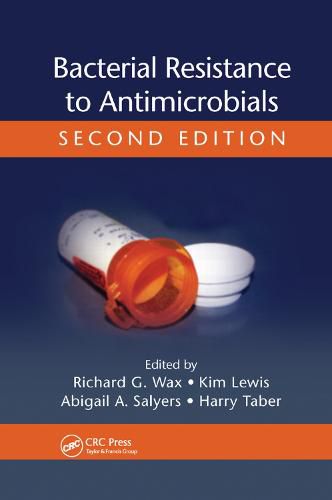Readings Newsletter
Become a Readings Member to make your shopping experience even easier.
Sign in or sign up for free!
You’re not far away from qualifying for FREE standard shipping within Australia
You’ve qualified for FREE standard shipping within Australia
The cart is loading…






The enormous genetic flexibility of bacteria jeopardizes the usefulness of currently available antibiotics, and requires new approaches to antibiotic discovery and development. Antimicrobial resistance can be acquired in a short time frame, both by genetic mutation and by direct transfer of resistance genes across genus and species boundaries. Understanding mechanisms of resistance is crucial to the future of antimicrobial therapy.
Extensively revised, with contributions from international leaders in their fields, Bacterial Resistance to Antimicrobials, Second Edition blends scientific and practical approaches to the social, economic, and medical issues related to this growing problem. The book begins with a history of antimicrobial agents and bacterial resistance, and outlines the forces that contributed to the abuse of antibiotics and precipitated the current crisis. It goes on to describe what is known about the ecology of antibiotic resistant bacteria and reveals the inadequacies in our understanding. Emphasizing public health aspects, the editors stress that significant progress will be made only by addressing the problem only as a public, worldwide, problem.
Chapters on resistance mechanisms describe the latest findings on what makes different groups of bacteria susceptible or resistant to antibiotics. They reveal the staggering diversity of bacteria and the need for a foundational understanding that will stimulate development of antibiotics capable of avoiding resistance mechanisms. Examining the success and limitations of complementary approaches, such as combining ss-lactam antibiotics with ss-lactamase inhibitors, the book brings together information on resistance mechanisms in different groups of bacteria to help future efforts to more effectively develop and deploy antimicrobial therapies.
$9.00 standard shipping within Australia
FREE standard shipping within Australia for orders over $100.00
Express & International shipping calculated at checkout
The enormous genetic flexibility of bacteria jeopardizes the usefulness of currently available antibiotics, and requires new approaches to antibiotic discovery and development. Antimicrobial resistance can be acquired in a short time frame, both by genetic mutation and by direct transfer of resistance genes across genus and species boundaries. Understanding mechanisms of resistance is crucial to the future of antimicrobial therapy.
Extensively revised, with contributions from international leaders in their fields, Bacterial Resistance to Antimicrobials, Second Edition blends scientific and practical approaches to the social, economic, and medical issues related to this growing problem. The book begins with a history of antimicrobial agents and bacterial resistance, and outlines the forces that contributed to the abuse of antibiotics and precipitated the current crisis. It goes on to describe what is known about the ecology of antibiotic resistant bacteria and reveals the inadequacies in our understanding. Emphasizing public health aspects, the editors stress that significant progress will be made only by addressing the problem only as a public, worldwide, problem.
Chapters on resistance mechanisms describe the latest findings on what makes different groups of bacteria susceptible or resistant to antibiotics. They reveal the staggering diversity of bacteria and the need for a foundational understanding that will stimulate development of antibiotics capable of avoiding resistance mechanisms. Examining the success and limitations of complementary approaches, such as combining ss-lactam antibiotics with ss-lactamase inhibitors, the book brings together information on resistance mechanisms in different groups of bacteria to help future efforts to more effectively develop and deploy antimicrobial therapies.